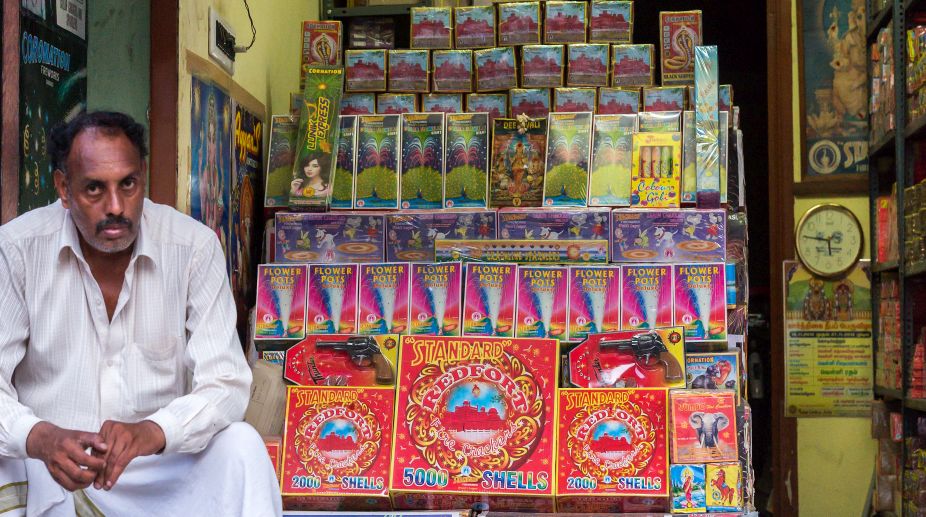Pitch for TN
Amidst the kaleidoscope of Tamil Nadu’s political landscape, the Bharatiya Janata Party (BJP) finds itself entangled in a complex web of identity, ideology, and electoral aspirations.

Representational Image (Photo: Getty)
With uncertainty looming over the future of the firecrackers industry, their apex organisation – the All India Federation of Fireworks Associations (AIFFA) said it has decided to close down the units in Tamil Nadu’s Sivakasi from Saturday onwards till a legal solution is secured.
The decision is expected to impact the lives of around eight lakh people dependent on the firecracker industry directly or indirectly, said a senior official of AIFFA, an umbrella grouping of various industry/trade bodies representing firecracker manufacturers, dealers of firecrackers, transporters, distributors, ancillary industries and others.
“The firecracker industry prays for early hearing of the case by the Supreme Court and the judgement given either way to do away with the uncertain situation,” AIFFA Vice President K.Mariappan told IANS over phone from Sivakasi, 540 km from here.
Advertisement
“Any delayed judgement, even favourable, will not help the industry or save the livelihood of eight lakh people who have already lost their employment as the industry has already closed with effect from December 23 due to the prevailing impossibilities and uncertainties,” he said.
“Bulk of the firecrackers manufactured in the country may be burst during the Diwali season. But the firecracker manufacturing is not a single day process, it is a year long process,” Mariappan pointed out, adding manufacturers in the Rs 4,000 crore industry do not want to risk any further investment owing to the uncertainty over their future.
According to AIFFA, the Supreme Court wanted to experiment on the pollution level and ordered that it wanted to see Delhi without fireworks during Diwali-2017 and imposed a ban on sale of firecrackers.
“It is to everybody’s knowledge that even without fireworks, Diwali 2017 witnessed high peaks in the pollution levels. Then to everybody’s surprise, from November 6 to December 5, nearly one-and-half months months after Diwali, the second smog turned Delhi into a ‘gas chamber’ and the air quality deteriorated to unprecedented levels, without any use of fireworks,” Mariappan said.
This worst state of affairs in Delhi was carried world-wide by international media on December 5, when the Sri Lankan cricket players vomited on the Delhi cricket ground due to the intense pollution levels, he said.
Smoke pollution by firecrackers is a single day affair but what needs to be tackled is the perpetual pollution causing factors, he said.
Mariappan said manufacturers and other trade partners from across the country will be at Sivakasi on December 28 to take stock of the situation and also to seek support from wide spectrum of people in their respective states.
“If our products are the main reason for smog in Delhi then Sivakasi by now should be a ghost city. The units here daily burst around Rs 100,000 worth of crackers for testing purposes.
“But people here breathe good air, there are different kinds of birds, including peacocks, and also butterflies,” G. Abiruben, Managing Director, Ayyan Fire Works, told IANS in a recent interaction. S. Maheswaran, Director, Standard Fire Works had told IANS that the firecracker industry in Sivakasi is slowly sinking and younger generation are moving out with the last three or four years very difficult for the sector and some units sold.
Advertisement